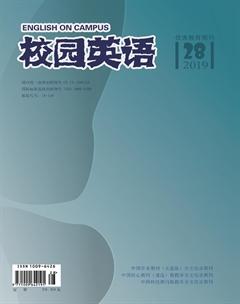On strategies of Post-listening
1. Introduction
At the end of listening activities, teachers explain the scrips and answers, but also guide the students to evaluate and feedback the listening activities and reflect on their own shortcomings in listening strategies. At the same time, students should give themselves right evaluation, summarize gains and losses and adjust listening strategies by the evaluation results. In the reflective process, teachers can organize the students to discuss in groups.Let each student summarize their experience and share with other members of the group. Through the evaluation and feedback, students can find out what strategies are reasonable, what strategy is insufficient. Then they can foster strengths and circumvent weaknesses to adjust the listening activities.
2. Self-assessment
Self——assessment is to check whether they understand the material, how to understand. It also evaluates whether their listening performance is improved after a period of training . Teachers can help students form self-monitoring and self-evaluation. In listening process Self--monitoring and evaluation can help students find their weak points in time and solve the problems to make a continuous improvement. It also can help students to assess their own listening proficiency in the different situations correctly.During Self-evaluating students can take more effective strategies to promote their listening achievement so as to improve their motivation.
This strategy involves gauging either general language progress or progress. Of course, the difficulty of the situation or the language must be taken into consideration in any self-evaluation .
listeners can check by themselves to determine whether they understood is really accurate. They can estimate what percentage of a conversation has been understood(for instance, less than a half, more than a half, almost all). They can assess whether they are at the stage of listening comprehension they expected. Students can consider whether their listening has improved since last week or last month, based on what they understand.
3. self-reflection
After listening, students cannot just simply correct the answers and then put it away.They should make a reflection on the listening process. Firstly, students should listen to the materials again and pay more attention to the key words or sentences which they do not get for the first time. Secondly, students should analyze the whole passage, understand its main idea and the content. Finally, students should summarize their advantages and disadvantage of listening. At the same time, they can learn as more new vocabulary and knowledge as they can from listening.
4. Conclusion
Post- listening strategies can help improve the students listening ability and performance.It also puts forward new requirements for them to prepare for their lessons carefully. Students should not only understand the structure of speech, intonation, vocabulary and grammar, but also should try their best to grasp the key words, discourse marker words, text structure so that they can prompt the process of the discourse. In conclusion, Post-listening strategy can not only hel praise students listening level, but also can urge them to learn actively and positively.
References:
[1]Holec, H. The learner as manager: Managing Learning or Managing to Learn. Wenden &J. Rubin. Learner strategies in Language Learning[J]. Prentice Hall International (UK) Ltd,1987.
[2]OMalley, J. M. & Chamot, A. U. Learning Strategies Cambridge University Press, in Second Language Acquisition[M]. Cambridge, 1990.
[3]Oxford, R. Language Learning Strategies: What Every Teacher Should Know[M]. Rowley, Mass: Newbury House.
[4]OMalley, J. M. & Chamot, A. U. Learning Strategies Cambridge University Press, in Second Language Acquisition[M]. Cambridge, 1990.
[5]付卉.外語听力教学中元认知策略的应用[J].湖北第二师范学院学报,2012(13):94-96.
[6]何祖佳.听力教学中元认知策略培训的实验研究[J].外语电化教学,2005(4):56-61.
【作者简介】吴恩梅,江苏省宿迁学院。

